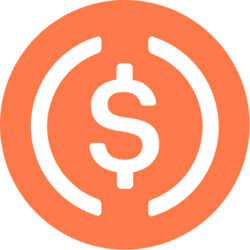
Americans are racking up more and more credit card debt.
Collectively, consumers owe a record $1.21 trillion on their credit cards, the Federal Reserve Bank of New York recently reported.
The average balance per consumer now stands at $6,580, up 3.5% year over year, according to a separate quarterly credit industry insights report from TransUnion.
Despite the uptick, the rate of change has slowed considerably, said Charlie Wise, TransUnion’s senior vice president of global research and consulting. “Consumers are still continuing to use their credit cards, but the amount they are leaning on them seems to be declining.”
In the wake of the pandemic, higher prices and high interest rates put many households under pressure and prices are still rising, albeit at a slower pace than they had been.
The consumer price index — a key inflation barometer — has fallen gradually from a 9.1% pandemic-era peak in June 2022 to 3% in January. but is still above the Federal Reserve’s 2% goal.
The central bank cut its benchmark rate by a full percentage point in the second half of 2024, but policymakers have been advocating a more cautious pace ahead as they evaluate the overall strength of the labor market and President Donald Trump’s policy ramifications.
More from Personal Finance:
Credit card debt hit a record $1.21 trillion
Here’s the inflation breakdown for January 2025
Wholesale egg prices have ‘blown way past’ record highs
According to meeting minutes released Wednesday, Federal Reserve officials agreed they would need to see inflation come down more before lowering interest rates further, and expressed concern about the impact tariffs may have.
In the meantime, households have largely adjusted to a new normal of high prices and high rates, Wise said: “We’re seeing a bit less of a reliance on credit cards to make ends meet.” After balances soared in 2022 and 2023, the growth in credit card debt has slowed considerably, he said.
Credit card delinquency rates, or those 90 days or more past due, fell year over year for the first time since 2020, TransUnion also found. “This is a good sign,” Wise said.
How to get out of credit card debt
“While most people are generally doing okay, the truth is that many, many Americans are a job loss, medical emergency or some other big, unexpected event [away] from being in a world of hurt,” said Matt Schulz, chief credit analyst at LendingTree and the author of “Ask Questions, Save Money, Make More.”
“It wouldn’t take much for them to go from pretty good to pretty dicey,” he said.
Credit cards are still one of the most expensive ways to borrow money after the Federal Reserve’s string of interest rate hikes lifted the average credit card rate to more than 20% — near an all-time high.
Even as the Fed lowered its benchmark at the end of last year, the average credit card rate barely budged.
“The good news is that there are plenty of options to help you pay down card debt,” Schulz said.
Rather than wait for a modest adjustment in the months ahead from further Fed rate cuts, borrowers could call their card issuer now and ask for a lower rate, switch to a zero-interest balance transfer credit card or consolidate and pay off high-interest credit cards with a personal loan, Schulz advised.
“If you’re really struggling, an accredited nonprofit credit counselor can make a huge difference,” he said. “Doing nothing, however, is not an option. It’ll only make things worse.”
Subscribe to CNBC on YouTube.













































